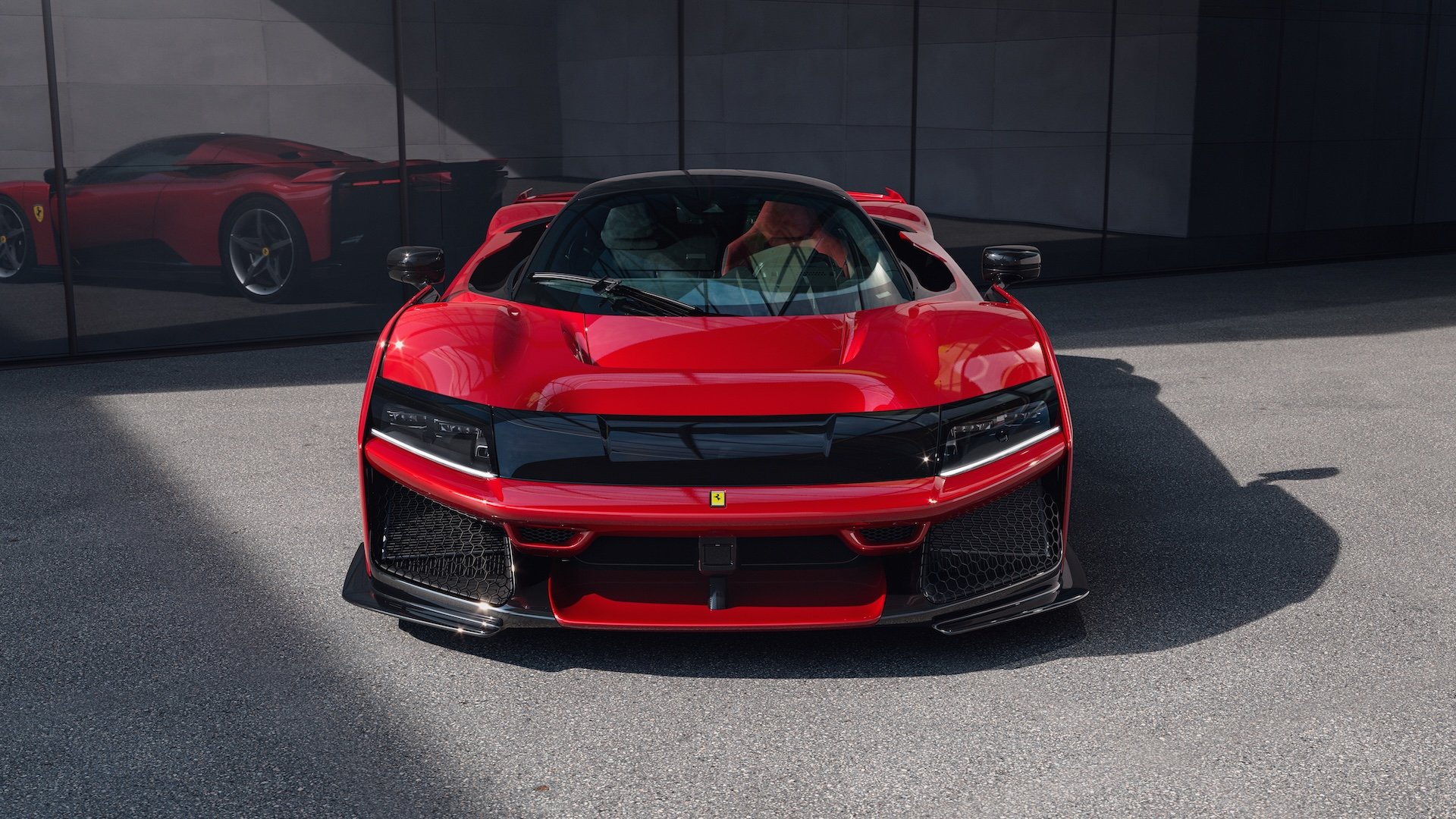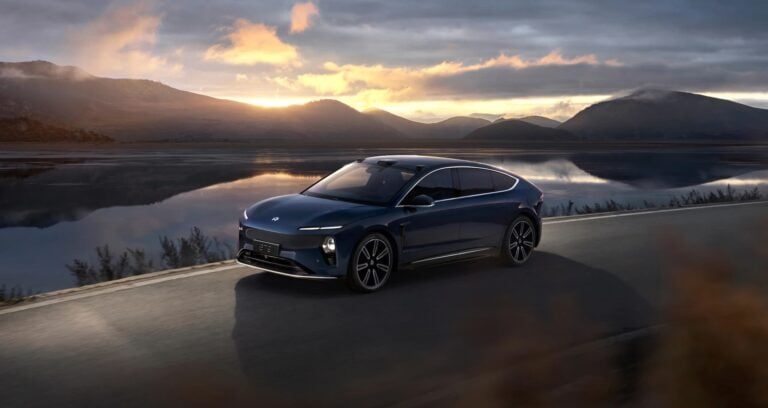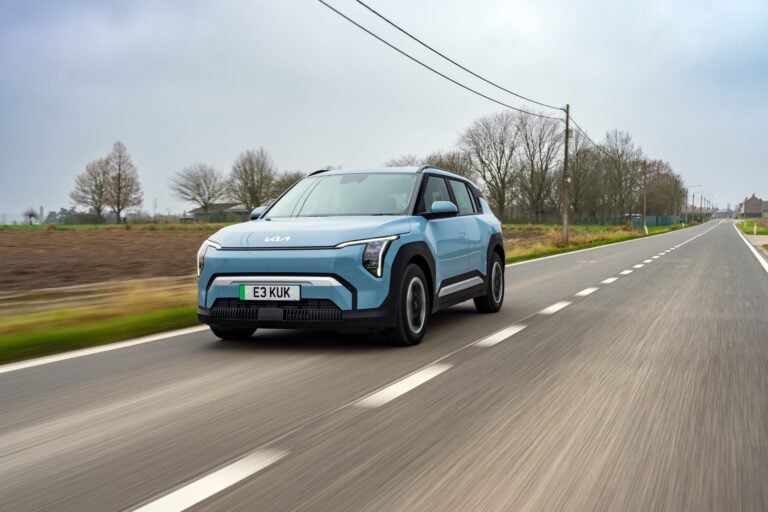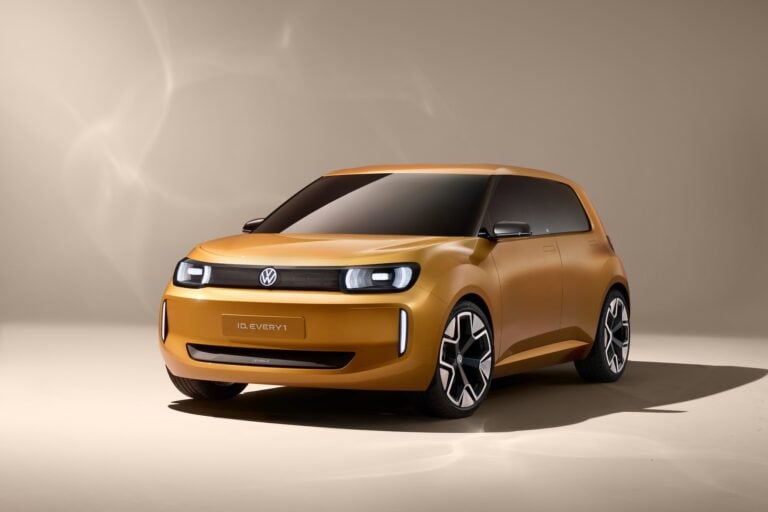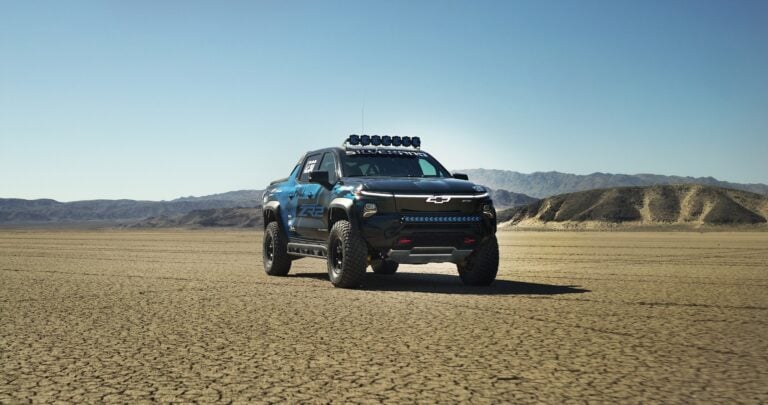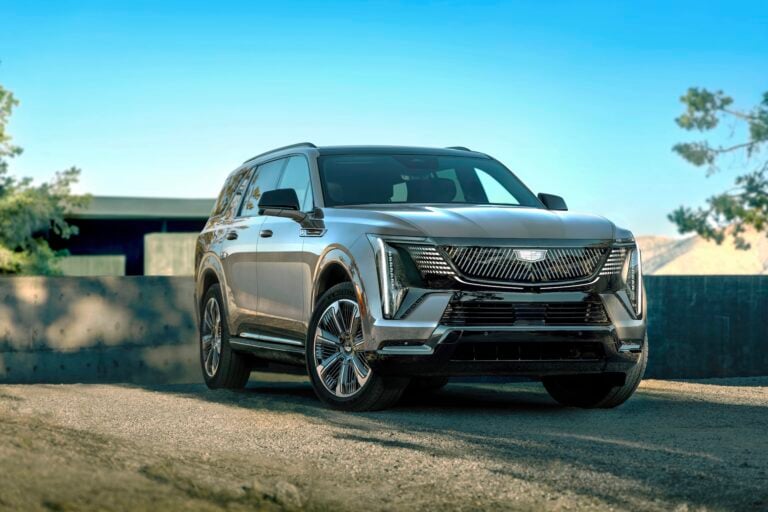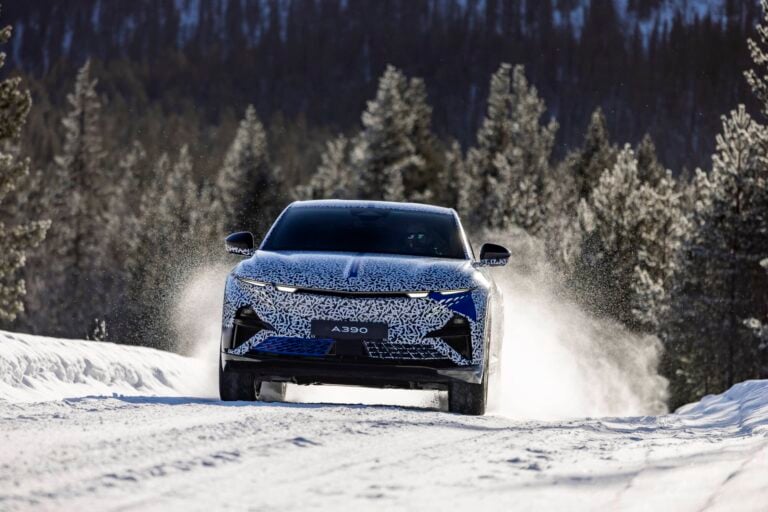Sign up for our popular daily email to catch all the latest EV news!
Ferrari has unveiled the F80, its latest supercar that sets a new benchmark in technology and performance. With a combined maximum power of 1200 hp from a V6-hybrid powertrain, the F80 is the most powerful road car ever produced by the marque. Limited to 799 units, this vehicle showcases Ferrari’s engineering excellence and represents an extreme development of the internal combustion engine.
Key Highlights
- Ferrari unveils the F80, a new supercar limited to 799 units.
- Features a V6-hybrid powertrain with a combined 1200 hp.
- Most powerful road car in Ferrari’s history.
- Incorporates advanced technological solutions, including electric turbo technology.
- Aerodynamics generate 1000 kg of downforce at 250 km/h.
Since 1984, Ferrari has periodically released supercars that represent the pinnacle of cutting-edge technology and innovation, destined to become legends in their own time. The F80 continues this tradition, embodying the ultimate in engineering for an internal-combustion-engined vehicle, utilizing the most advanced technological solutions, including the latest-generation hybrid technology.
The car features a carbon-fiber chassis and extreme aerodynamic solutions that surpass anything previously seen in a road-legal vehicle. The F80’s architecture is designed to maximize performance, with a narrow, driver-centric cabin that still offers space and comfort for a passenger. This choice enhances aerodynamics by minimizing drag and weight.
Powered by a three-liter 120° V6 engine (F163CF), the F80 produces an astonishing 900 hp from the internal combustion engine alone, achieving the highest specific power output ever for a Ferrari (300 cv/l). This is complemented by the hybrid system’s electric front axle and rear motor, adding an additional 300 cv, bringing the total to 1200 hp.
Drawing from Ferrari’s motorsport experience, particularly Formula 1 and endurance racing, the F80 employs technologies such as electric turbochargers (e-turbos) and components closely derived from the powerplant of the 499P, which won the last two editions of the 24 Hours of Le Mans. The e-turbos feature an electric motor installed between the turbine and compressor of each turbo, allowing for an extraordinary specific power output and instantaneous response from low in the rev range.
Aerodynamics play a crucial role in the F80’s performance, with features like an active rear wing, rear diffuser, flat underbody, front triplane wing, and S-Duct working together to generate 1000 kg of downforce at 250 km/h. The active suspension system contributes directly to generating ground effect, enhancing stability and handling.
The F80’s design marks the beginning of a new era for Ferrari, with a more tense and extreme design language that accentuates its race-bred soul. The cockpit has a single-seater feel, emphasizing the driver’s role while maintaining passenger comfort. The butterfly doors with a dual axis of rotation hinge mechanism open vertically to an angle of almost 90 degrees.
Advanced vehicle dynamics technologies include the latest version of Ferrari’s Side Slip Control (SSC 9.0) system, with integrated FIVE (Ferrari Integrated Vehicle Estimator) function, and an innovative Boost Optimization feature that enhances performance on the track by delivering extra power where it’s most needed. The F80 introduces a new braking system developed with Brembo, featuring CCM-R Plus technology, providing superior performance over any other road-going carbon ceramic system.
The F80 is equipped with state-of-the-art components, such as custom-developed Michelin tires, available in Pilot Sport Cup2 and Pilot Sport Cup2R variants. Despite its track-oriented capabilities, the F80 offers uncompromising levels of usability on the road, including a suite of ADAS driver-assist functions like Adaptive Cruise Control, Lane Keeping Assist, and Traffic Sign Recognition.
The vehicle’s chassis employs a multi-material approach, using carbon fiber for the cell and roof, and aluminum for the front and rear subframes. This construction results in a dry weight of 1525 kg, with a weight distribution of 42.2% front / 57.8% rear.
As with all Ferrari supercars, the F80 marks the start of a new design era, combining cutting-edge technology with a design that underscores its performance capabilities. The F80 represents Ferrari’s commitment to pushing the boundaries of innovation while maintaining the brand’s rich heritage.
Sign up for our popular daily email to catch all the latest EV news!

